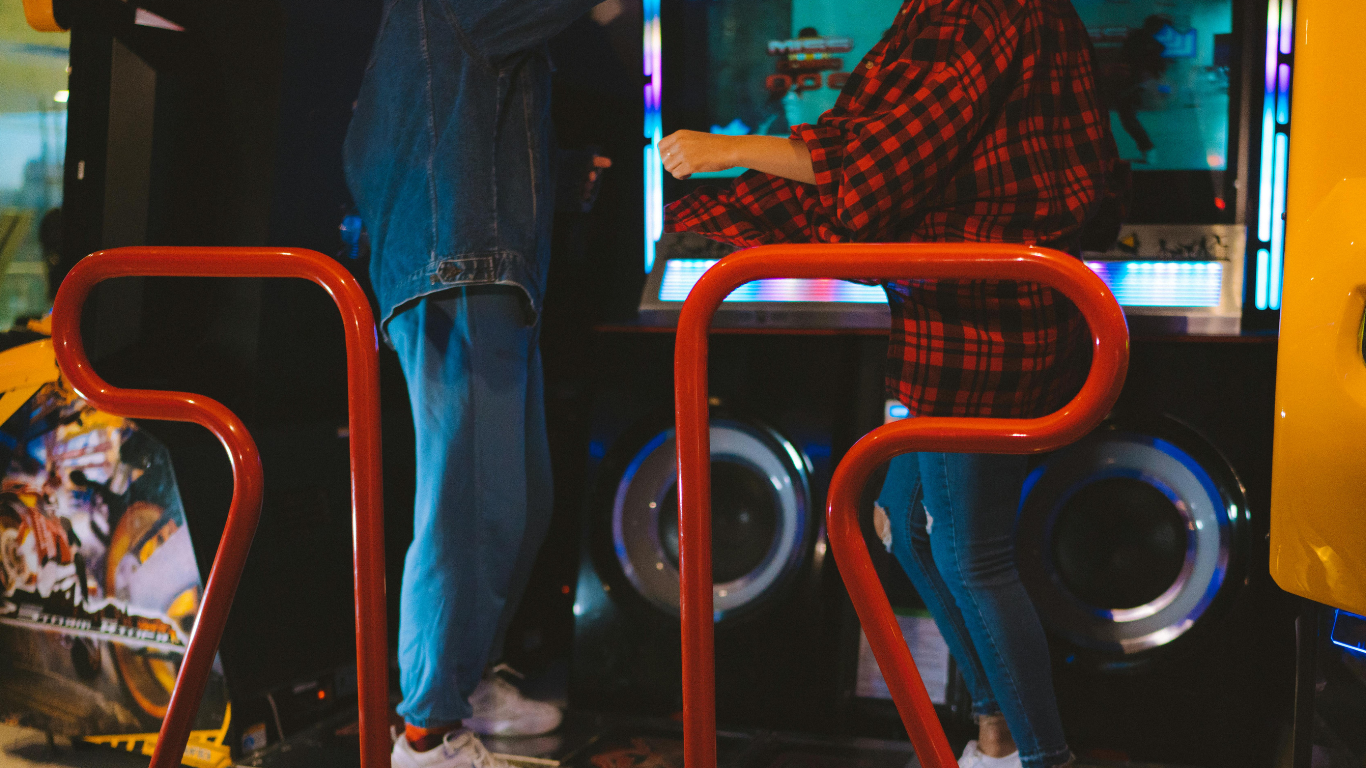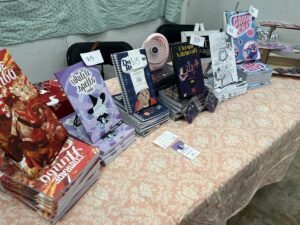The rhythm game Dance Dance Revolution, known as DDR to its fans and detractors, kicked ass in the early aughts and continues to kick ass over 20 years later. Too hot to go jogging? Better toss DDR Max 2 into the agéd PS2. Too rainy for a bike ride? What a great time for DDR Max 2. Too late at night to go to the gym? Is it DDR Max 2 AM already? I might not be an athlete or an actual dancer, but for most of my Youth, I could effortlessly plow through half of the DDR Extreme catalog on heavy mode on four hours of sleep or less.
But after a year of doctor’s appointments and not one but two new autoimmune diagnoses, I was desperate to feel at home in my body again, even if just for a little while — so I did what I’ve always done. I dusted off my DDR gear and slipped back into the finest licensed eurobeat tracks that 1998 had to offer.
…At least that was my plan, but apparently jumping back into an extremely specific video game niche over a decade past its pop culture expiration date isn’t that easy. It took a lot of literal and metaphorical legwork, but after months of voyaging across the DDR internet, I’m happy to report that you, too, can get back into the rhythm game groove! No need to cry buckets of tears — I’ll be your guide on how to dive straight back into DDR Hell.
Lesson 1: You (probably) can’t really go back to DDR Hell
The DDR of our youth is mostly gone from this earth. Arcade play is out of the question for most folks — even if you found a working DDR machine at a local arcade, do you really want to suck in COVID juice while you’re burnin’ the floor?
To make matters worse, firing up DDR at home might be tricky, too, as it seems Konami hasn’t released a major DDR game hit stateside in years.
And while your elderly PS2 or Xbox might still work, unless you’re still rocking an old school CRT (cathode ray, AKA “tube”) TV, many of your favorite old school rhythm games may be too laggy for comfort. Newer rhythm games like Rock Band (L O L) often let you calibrate your accessories to avoid this very issue. Unfortunately, most DDR games didn’t account for this technological transition. So, if you’re going for a retro DDR experience, don’t forget the big box display. Otherwise, you might need to shift your expectations to descending into Stepmania Hell instead.
Lesson 2: Everything else you need is either expensive or free
Stepmania is free software that basically allows you to load in “simfiles” to dance to any songs you like — and for about two decades, fans have been making them for a mind-boggling variety of songs. You can find simfiles for the old DDR standards, and some newer tracks, too. Plus, Stepmania can calibrate your old dance mat to adjust step timing — no CRT TV required.
However, new DDR dance pads are gonna set you back. Cheap ones seem to run for about $40 for flimsy plastic and $80-$100 for thicker foam. But for a truly luxe DDR experience, most fans recommend procuring a sturdier metal DDR pad in one of three ways:
- Scouring “Cobalt Flux Buy and Sell” Facebook groups. Back in the day, Cobalt Flux was the gold standard for high quality DDR pads. As they no longer manufacture dance mats, a used one will cost anywhere between $300-$600 USD.
- Purchase a brand new metal DDR pad from the Polish company L-Tek — these normally cost at least $350-$450 USD (including shipping).
- Build your own Cobalt Flux-style metal DDR pad, either by modifying a flimsier plastic one or by fully assembling one yourself. DIY assembly kits cost roughly $300 USD, though you’ll need to find your own wooden base and procure your own tools.
Lesson 3: Plan to spend a whole day tracking down simfiles
The dreams of your youth have been fulfilled in Stepmania — if you have the patience to track down the simfiles, you can play pretty much every single actual DDR song. The Captain Jack discography is your oyster and the Naoki Maeda back catalog can be yours.
However, beyond the DDR classics, locating simfiles might lead you deep into the bowels of a 10-15 year old message board, sometimes without even a search bar to guide you.
You can definitely find:
- Assorted DDR song mashups
- Electronic remixes for every popular anime theme released between 1995-2008
- Most tracks from Carly Rae Jepsen’s Emotion
- Unsettling Nintendo background music
You can sometimes find:
- Pop hits from the year you graduated high school
- K-pop, new and old
- Recent anime theme songs
- The whole Undertale soundtrack
And if you’re lucky, you might even be able to find:
- Citypop classics
- Current English-language pop hits
- Original, non-remixed versions of those classic anime themes
If you’re down to browse, check out the Stepmania subreddit for tips on how to get your song selection started on the right foot.
If this process seems a little frustrating, it really can be! But for the most part, diving into a catalog of simfiles is more fun than annoying. Like DDR itself, finding songs is a journey and not a destination. You’ll rediscover songs you once loved with the full force of your young heart and find delightful new oddities along the way.
Lesson 4: Somehow your body and your heart still remember how to play DDR, but you should still pace yourself
At the outset of my 32-Year-Old DDR Rediscovery, panting and wheezing through my old warm-up songs left me feeling a little humbled, like I was recapturing my escaped Clow Cards after they all scattered to the wind. The battles were familiar but so much harder this time. As I slogged through the easiest possible versions of my old favorite songs, I vividly remembered the triumph and joy of flying through every tricky combo, of nailing every jump. I’ve never claimed that DDR was a sport, but for my teenage self, it was a special place where I felt graceful, fast, and strong.
I stuck to a routine, playing a few 30 minute sessions every week and challenging myself to keep those sessions as easy as I needed them to be. And then, faster than I thought possible, the old muscle memory started to kick in. Bit by bit, I could feel myself getting stronger and slowly started ramping up the difficulty. Every old favorite I completed felt like rediscovering an old friend.
Getting caught up in the moment is nice, but I didn’t account for how much my creakier older body needed to wind down after an extra long play session. I’m a lot slower to jump into difficult songs these days. I pay closer attention to my technique on slow ones. And, above all, I always stretch before I wrap things up. I’ve noticed that jump rope cooldown stretching routines like this help me avoid feeling busted the next day.
If I’m being honest with myself, I know that DDR is unlikely to catch on with anyone who didn’t spend their formative years waiting to slam a quarter or two down on a DDR arcade machine. But even after 16 years, I still can’t stop falling in love with DDR. I’m grateful to these games for giving me half a lifetime of weird joy, and I’ll stick with the series as long as I physically can.
Maybe someday, a new rhythm game franchise can take the world by storm and teach us all what to do with our arms while we dance. Or maybe against all odds, DDR will be rediscovered by a new generation of awkward youths. As those of us who have loved the series this long know, there’s always a tomorrow!
Ko-fi members — head on over to our Ko-Fi page today for a few extra tips to help you dip your toes into the wild world of simfiles. Plus, for your viewing pleasure: all the article titles for this piece that we brainstormed and vetoed along the way.
Featured image by Anastasia Shuraeva via Pexels.




